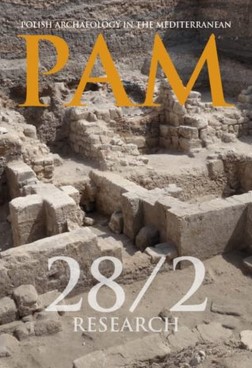Excavation of the small animal cemetery at the Roman Red Sea harbor of Berenike in 2018 and 2019
Excavation of the small animal cemetery at the Roman Red Sea harbor of Berenike in 2018 and 2019
Author(s): Piotr Osypiński, Marta OsypińskaSubject(s): Archaeology, Cultural history, Regional Geography, Local History / Microhistory, Ancient World
Published by: Wydawnictwa Uniwersytetu Warszawskiego
Keywords: field-report; cemetery; animals; early Roman Egypt; Berenike;
Summary/Abstract: The paper discusses funeral practices with regard to animals in ancient Berenike, investigated in two seasons of exploration, 2018 and 2019 (trenches BE18/19-107, BE01/19-48 and BE19/132). Three groups of animals are represented almost exclusively in the burials. These are cats, dogs and monkeys, buried mainly around the top and on what was the eastern slope of a sand dune. In the mid 1st century AD, an enclosure wall roughly 0.50 m thick was built enclosing a space of about 20 m2 with no apparent floor surface inside it. Outside the wall, a clay pavement surrounded the enclosure on at least three sides. Animal burials accumulated around this enclosure for the next century or so, achieving the greatest density close to the feature. By the 2nd century AD urban rubbish had encroached heavily upon the area taken up by the burials. Most likely in the beginning of the 3rd century AD, the wall was dismantled, perhaps together with the features that had been inside the enclosure (statue, column, tree?). Interestingly, two goats were buried by the two excavated corners (northeastern and northwestern ones) in this period. One of these represented a variant of the species not typical of Northeastern Africa.
Journal: Polish Archaeology in the Mediterranean
- Issue Year: 2/2019
- Issue No: XXVIII
- Page Range: 175-194
- Page Count: 20
- Language: English

